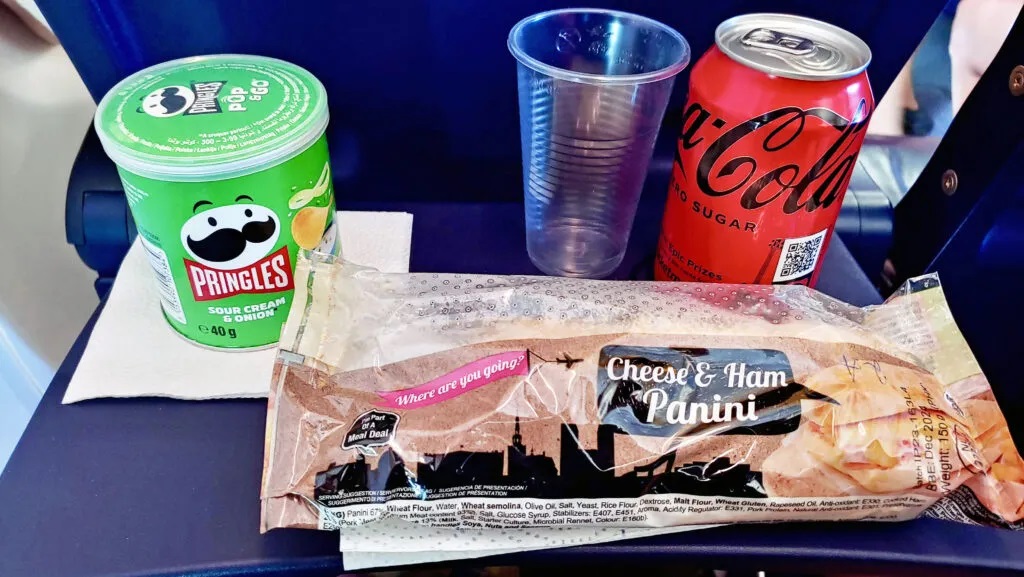A Focus On RyanAir
17 December, 2024
4 min read
Sharon Petersen
Airlines in this article
By joining our newsletter, you agree to our Privacy Policy


Airlines in this article
Ryanair, Europe’s largest low-cost airline, was established in 1984 by the Ryan family with the goal of providing budget-friendly flights across Ireland and the UK. The airline’s inaugural flight took off in 1985, operating a 15-seat Embraer Bandeirante between Waterford and London Gatwick.
The pivotal moment for Ryanair came in the early 1990s, following the deregulation of the European aviation market. This allowed the airline to adopt a low-cost model inspired by the U.S.-based Southwest Airlines. Under the leadership of Michael O'Leary, who became CEO in 1994, Ryanair transformed into a no-frills carrier, focusing on efficiency with just one aircraft type, the Boeing 737-800 and quick turnarounds of 40 minutes. Today, Ryanair serves as a benchmark for the low-cost aviation sector.

Ryanair Fleet and Destinations
Ryanair operates one of the youngest fleets in the world. As of 2024, the airline boasts over 560 aircraft, primarily Boeing 737-800s, with the newer 737 MAX 8-200 joining the fleet to enhance capacity and reduce emissions. These MAX aircraft are configured to accommodate 197 passengers, where as the 737-800 carries 180.
The airline flies to over 230 destinations in 40 countries, covering major cities and secondary airports across Europe, North Africa, and the Middle East. Key bases include London Stansted, Dublin, Milan Bergamo, and Frankfurt Hahn, strategically chosen to minimize airport fees and support Ryanair’s low-cost strategy.

Ryanair Controversies and Upselling
Despite its success, Ryanair has faced its share of controversies. The airline’s labour practices, particularly its treatment of pilots and cabin crew, have been a frequent source of criticism. In 2018, strikes across Europe highlighted employee grievances over pay, working conditions, and the use of contracts based in countries with less favourable labour laws.
Ryanair has also faced backlash for its aggressive ancillary fee structure, with customers often complaining about high charges for baggage, seat selection, and other add-ons. Critics argue that these practices undermine its advertised low fares.
If two or more passengers purchase a flight in one booking and don’t pay for seats together they will more than likely be allocated separate seats, a practice that has received a lot of negative attention but boosted Ryanair’s profits. Passengers must also check in online and either print or download their boarding pass to avoid the $50 fee.
The advertised fee on Ryanair includes nothing but a very small bag that you can put under the seat in front of you so generally you do need to pay more. You are not able to use the overhead lockers unless you pay for the regular fee at the very least.

Environmental groups have targeted the airline for its carbon footprint, given the sheer volume of flights it operates. While Ryanair has invested in newer, more fuel-efficient aircraft and implemented a carbon offset program, it remains one of Europe’s largest carbon emitters.
Ryanair Success and Achievements
Ryanair’s success lies in its ability to make air travel accessible to millions who previously couldn’t afford it. Carrying over 168 million passengers annually, it has consistently been the largest airline in Europe by passenger numbers. The carrier’s low-cost strategy has forced competitors to lower their fares, reshaping the European aviation landscape.
Financially, Ryanair has been a standout performer, achieving steady profitability through stringent cost control, high aircraft utilization, and ancillary revenue streams like baggage fees, hand luggage fees, seat selection, priority boarding, and in-flight sales. The airline’s “Always Getting Better” program, launched in 2014, has helped to improve customer satisfaction by introducing new routes, flexible ticket options, and more transparent pricing.
On Board
Ryanair’s no frills approach means passengers need to pay for everything extra such as meals, snacks and even water. There are no amenities available such as blankets or pillows and no in flight entertainment. The seats which do not recline and have a seat pitch of 28.5-29.5 inch

Looking Ahead at Ryan Air
Ryanair’s future looks promising as it continues to expand its network, particularly in underserved markets. The airline’s commitment to sustainability includes plans to achieve net-zero carbon emissions by 2050, supported by fleet modernization and the exploration of sustainable aviation fuels (SAF).
Airlines in this article
Get the latest news and updates straight to your inbox
No spam, no hassle, no fuss, just airline news direct to you.
By joining our newsletter, you agree to our Privacy Policy
Find us on social media
Comments
No comments yet, be the first to write one.

